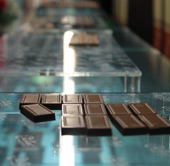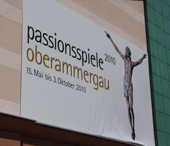Stand on the top of a mountain and breathe in the cold Alpine air. Look through the thin vapors to the valley beneath you, and hear the clanging bells around the necks of cows grazing on the hillside. Take it in slowly, and linger a while: This is storybook country, a land enchanted by its own scenery and history. This is a place you will remember.
The Alps of central Europe seem to have a magical effect on visitors, many of whom dream their whole lives about visiting the picturesque countries in which they’re located. When you stand there and see the lakes and chalets for yourself, it’s easy to understand why.
I visited the Alps in Switzerland, Austria and Germany on a 10-day tour this summer as a guest of Collette Vacations, in every respect, the beauty of these countries lived up to their reputations. But beyond the scenery, there’s so much more to discover, from hilltop castles and fortresses to peaceful country churches and charming villages.
On a trip like this, everyone is going to have their favorite places. There are five that I won’t soon forget.
Montreux, Switzerland
Montreux is cradled on Lake Geneva between the mountains in the French-speaking region of Switzerland. A modern city, it has a thriving arts scene and a world-renowned annual jazz festival; the history-minded visitor, though, will remember Montreux for Chateau de Chillon, a centuries-old castle that sits on a bluff overlooking the lake.
French dukes built the first sections of Chillon in the 800s, and the castle was lived in and expanded by nobility for more than 1,000 years. The last residents moved out in the 1800s, and today, Chateau de Chillon is preserved as a historical museum.
English poet Lord Byron made the castle famous in his popular work “The Prisoner of Chillon.” During a tour of the castle, my group visited the dungeon, where as many as 250 prisoners were held at one time, and saw where Byron carved his initials into a stone pillar.
| From cheese to chocolate |
| If Switzerland is the land of cheese and chocolates, we wasted no time diving in to the heart of the country. Our first full day of the tour took us from our home base in Bern to Gruyere, a village famous for both its scenic beauty and its namesake cheese.
We visited a local cheese factory, where we learned about the production of the area’s specialty from beginning to end. Along the way, we saw milk being skimmed, cultured and processed into cheese and took a peek inside the “cave” where cheese makers leave their wheels of cheese to sit for up to a year before selling them. Upon leaving, each member of the group received three different gruyere samples, which demonstrated how the cheese’s flavor chan We also got our share of chocolate, too. Just outside of Gruyere, the town of Bloc is home to Cailler, one of Switzerland’s historic chocolatiers. On a tour of the factory, we learned about some of the raw ingredients used in making chocolate and saw examples of both antique and modern machines used in the factory. The best part of the tour, though, came at the end, when we were invited to unlimited samples of all of Cailler’s products. |
The tour of the large castle afforded us interesting glimpses into the lives of its inhabitants. We saw the artwork and the furniture that was created for them centuries ago, and much of it is still beautiful today.
As we toured bedrooms, great halls, kitchens and bathrooms, our castle guide also pointed out how residents dealt with more mundane affairs, such as cooking and bathing.
“We often think that in the Middle Ages, people were very dirty,” she said. “They were not; they were very clean. They washed their hands and faces often, and took baths just about every day.”
Lucerne, Switzerland
As our tour bus approached Lucerne, another lakeside alpine town in Switzerland, Collette tour manager Jeff Scott prepared the group for what we were about to see.
“They say that Lucerne is the most beautiful city in the world,” he told us. “They also say it’s the most visited city in the world, in relation to the number of residents. Only 63,000 people live here, but they have millions of visitors every year.”
Arriving in the city center, we immediately understood. Spread out on the banks of Lake Lucerne under the shadow of Mount Pilatus, the city is as picturesque as any in Europe. Scott led us on a tour downtown to see the famous Chapel Bridge across the lake, which was built in the 14th century and later painted with scenes of 17th-century life.
We also visited the Lion of Lucerne, a large statue carved in a sandstone cliff that memorializes hundreds of local soldiers who died during the French Revolution.
The highlight of our time in Lucerne, though, was our excursion to the top of Mount Pilatus. The 7,000-foot ascent required gondola rides on two separate lifts; as we climbed, we saw beautiful views of the city below us and heard the cowbells of the herds grazing on the lower mountain slopes.
We came down by way of a unique railway, whose cars are designed on a slant to accommodate the 45-degree slope the tracks follow down the side of the mountain.
Innsbruck, Austria
If a picture is worth a thousand words, then snapshots of Innsbruck, Austria, are worth 10,000.
Our visit to Innsbruck began outside the city with an introduction to the surrounding mountains that so define this destination. From a mountaintop vantage point, which also serves as a world-class ski jump, our local guide, Angelica, explained just how important the Alps are to locals.
“In Innsbruck, whenever you look out your window, you see a mountain,” she told us. “Children here start learning to ski when they are 3 years old. And if you’re a university student in Innsbruck, you study about 10 years, long enough to ski every peak and climb every mountain.”
The mountains are beautiful, but the real treasure of Innsbruck lies in its Old Town. The original city center was built in the 14th and 15th centuries, but today, only a small portion of that remains; the rest of the district was destroyed in the bombing raids of World War II. But those few blocks are a masterpiece: Narrow pedestrian streets wind their way between the facades of centuries-old buildings, trimmed and decorated with baroque-era artwork and immaculately maintained.
St. Jacob’s Cathedral in Old Town is a study in baroque architecture and houses a trove of artwork from the 1720s on. Visitors can also tour the “small” castle in Old Town, which has “only” 440 rooms.
Old Town is more than historical, though; it’s just plain fun. The fanciful architecture, tiled streets and pastel-colored walls make you feel like you’re walking inside a fairy tale. Sidewalk cafes, jewelry stores and candy shops add a touch of modern appeal.
For a tourist in Innsbruck, there is no better place to spend an afternoon or evening. And no matter which alley you look down, the Alps linger in the distance.
Salzburg, Austria
The hills around Salzburg are alive with the sound of music — and The Sound of Music.
Historically, Salzburg is perhaps best known as the home of Wolfgang Mozart, one of the most influential classical music composers of all time. Mozart lived in two different houses in Salzburg for a total of 26 years; today, they are both open as Mozart museums for visitors.
In the oldest section of the city, visitors filled the Mozart Plaza on the day of our visit. Our city guide, Manford, walked us through the plaza and the adjacent Salzburg Cathedral.
| Local citizenry set to stage Oberammergau |
| When our tour bus pulled into Oberammergau this summer, there was little indication that in less than a year, this small German village will be packed with visitors from all over the world.
Oberammergau’s Passion Play, which will take place in 2010, is perhaps the most anticipated event in the world of tourism. Locals have performed the play once every 10 years since the 1630s, when they vowed to re-enact the Passion after being spared the ravages of the bubonic plague. Over nearly 400 years, what started as a small local tradition has grown into the largest, most elaborate Passion play in the world. Next year’s play will be performed five times a week, from mid-May through early October. It is an effort of the entire town, and already preparations are well underway. On the day of our visit, set designers were busy preparing the stage for one of the numerous backdrops to be used in the production. Throughout the town, local men stopped shaving just before Easter this year in order to be appropriately scruffy to appear in the play next summer. All told, about 2,000 locals will appear on stage. |
“In 1974, this cathedral was 1,200 years old,” he said. “Most of Mozart’s compositions in his 26 years in Salzburg were played here for the first time.”
More recently, Salzburg was the setting for Rodgers and Hammerstein’s The Sound of Music, and parts of the film version of the story were produced in the city. One of the most popular spots for visitors is Mirabel Gardens, where Julie Andrews and the supporting cast of children filmed the “Do-Re-Mi” sequence.
I was surprised to see that the garden still appears exactly as it did in the 1965 film, but Manford explained that the appearance long predates the movie.
“Mirabel was a present from an archbishop to his girlfriend and his children in 1660,” he said. “The flowers here have been planted in the same design since 1676.”
Bavaria, Germany
We spent the final day of our tour exploring some of the smaller towns and villages in the Bavaria region of Germany. Along the way, we stopped for a snapshot at Neuschwanstein, a famous mountaintop castle that was the architectural inspiration for the Magic Kingdom castle at Disney World in Florida.
We also made a short stop in Oberammergau, the small village that will welcome the world to its once-a-decade Passion Play next summer.
But my favorite stop was at Wieskirche, a World Heritage site a short drive from Oberammergau. Meaning “church in the mountains,” the Wieskirche was built in the 1540s around a small statue of Christ that had become famous in Germany. Today, the church is also recognized for its incredible art and architecture.
“This is considered to be the most pure example of a Rococo church in Germany,” Scott said. “Rococo style is known for being extremely ornate, even more so than baroque.”
At this particular church, though, the ornamentation is all on the inside. Unlike some churches of the period, the Wieskirche is light and airy on the inside, with tall white walls. All of the art, which depicts biblical scenes in soothing pastel colors, was done above eye level, as if to draw a worshiper’s attention to the heavens.
Perhaps my favorite part, though, was the service in progress during the time of our visit. To see this place still being used in the way its designers intended almost 500 years ago made it much more meaningful than the average tourist church visit. The singing voices gave this special church a magic all its own.
Collette Vacations
(800) 223-0864
www.collette.com











